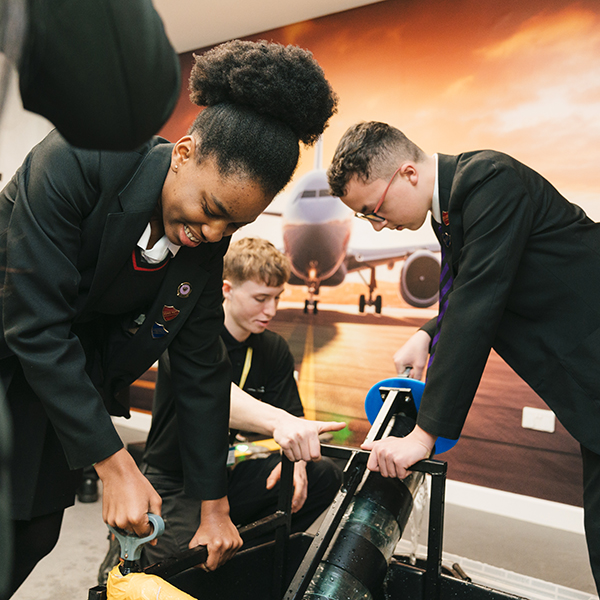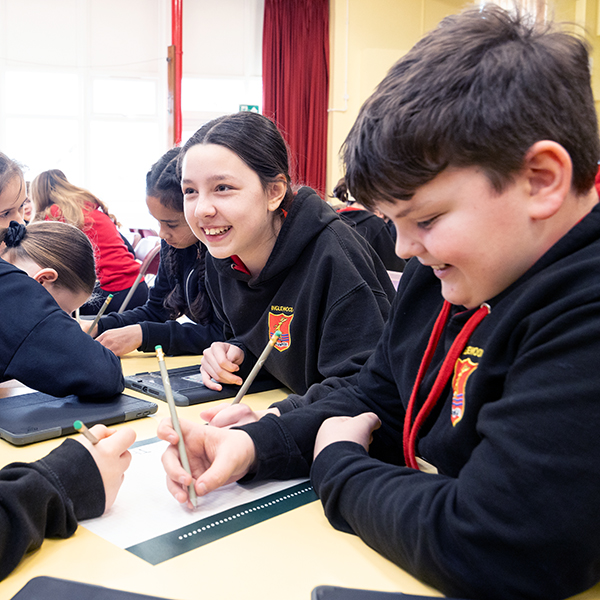Now is the time for governing bodies, sponsors and rights holders to think hard about how they reach young people, argues EVERFI president Nick Fuller in an article for SportsPro.
Towards the end of last year, there was welcome news from Sport England: the number of children and young people doing an hour or more of physical exercise each day had risen by 279,600 to 3.3 million compared to the previous year.
It was testament to the huge effort that, over the last few years, has gone into making sport and physical activity attractive and more accessible to children and young people.
Of course, there’s more work to be done here, as the sports sector acknowledges. It’s an ongoing mission and Sport England research shows us that there are also particular communities of young people who are less regularly active, including those from lower-socio-economic groups and those with disabilities. More work needs to be done to support regular activity here. But, overall, considerable progress has been made and we should not let Covid-19 stop this.
Young people remain sport’s future and lifeblood. Yes, the financial picture has radically changed, with predictions that global sports sponsorship spend will take a US$17.2 billion hit this year. But governing bodies, sponsors and rights-holding broadcasters continue to have a clear interest in young people coming to sport, whether as fans or as participants.
Technology as a disrupter to the sport-home-school dynamic
Covid has certainly disrupted our sector, but technology – itself always a disrupter of the status quo – has reconfigured the sport-home-school dynamic in this unprecedented period of lockdown and social distancing. And, in some ways, this has been for the better.
There have been some outstanding activation strategies over the last few months that have used technology to reach young people in more profound, more scalable and more cost-effective ways.
Team GB and ParalympicsGB, for example, used digital technology to swiftly adapt their ‘Travel to Tokyo’ programme, which encourages young people and their families to become more active in the run-up to the Tokyo 2020 Olympic and Paralympic Games.
By providing families with simple but effective resources they can use at home, with access to Olympic and Paralympic athletes, and with suggestions for low-cost, local activity, they managed to reach more than 280,000 young people and their families during lockdown.
When schools closed, Premier League Primary Stars was also quick off the mark to create a home-learning hub which built strong links with young people and demonstrated support for local communities. Teacher-facing resources were repurposed to provide free learning activities for families, to help educate and entertain children who were unable to attend school.
Activation strategies like these will outlive the pandemic, and these digital tools and techniques will become a more prominent part of how sports organisations activate their school and community partnerships in the future. These programmes influence young people at an age when habits and loyalties are formed for life, and they can change the behaviours of entire families and communities. They also show sponsors and rights holders giving something back.
There are still, of course, many examples of effective face-to-face activation strategies. Take the way supermarket chain Aldi teamed up with the Irish Rugby Football Union to run its Play Rugby scheme last year. More than 100,000 primary school-aged pupils benefited from coaching and equipment as a result.
As long as Covid allows it, face-to-face strategies will continue to exist. But it will be the activation strategies that combine, where possible, face-to-face opportunities with the use of technology that offer a deep and scalable connection with young people.
Take firm and authentic action on social issues
Young people, in particular, identify with purpose-led campaigns. Governing bodies, sponsors and rights holders that engage authentically with important social issues can build strong links with young people and persuade more of them to take up their sport.
The award-winning ‘This Girl Can’ campaign has made significant progress in addressing the gap between male and female participation in sport by tapping into young women’s anxieties about being judged for their appearances or their priorities. More recently, Barclays, as a key part of its sponsorship of the Women’s Super League (WSL), is consolidating grassroots initiatives, and thereby inspiring more girls to take up the sport.
Often, though, it’s athletes themselves who can be the most powerful agents for social change. Since the pandemic, we’ve seen many speak candidly and with passion to fans from their own homes, and they have applied their own considerable motivation to support young people and their families in lockdown.
Governing bodies, sponsors and rights holders recognise that their athletes are powerful role models and persuasive agents for behaviour change, particularly when it comes to the influence they can have on young people. But in recent months we have seen this power applied more than ever, and to social issues as well as product and team endorsements.
Look at the huge impact Marcus Rashford is having on Government policy concerning child food poverty. Look at the acclaim Joe Hart, the former England goalkeeper, has received for speaking out about seeking professional help for his mental health. Or the motivation and confidence British sprinter Laviai Nielsen has provided to young people with her workouts, challenges and video diaries on her social media channels.
Purpose-led, digitally enabled activation strategies reach young people and engage them effectively – as fans, as participants, and as people who lead healthy, active lives.
Now is the opportunity for sponsors, rights holders and governing bodies to come up with even deeper, more cost-effective and scalable solutions.

Nick Fuller is president of EVERFI (International), whose clients include the Premier League, the Lawn Tennis Association (LTA), and the England and Wales Cricket Board (ECB). He was formerly head of education at the London 2012 Olympic and Paralympic Games.







